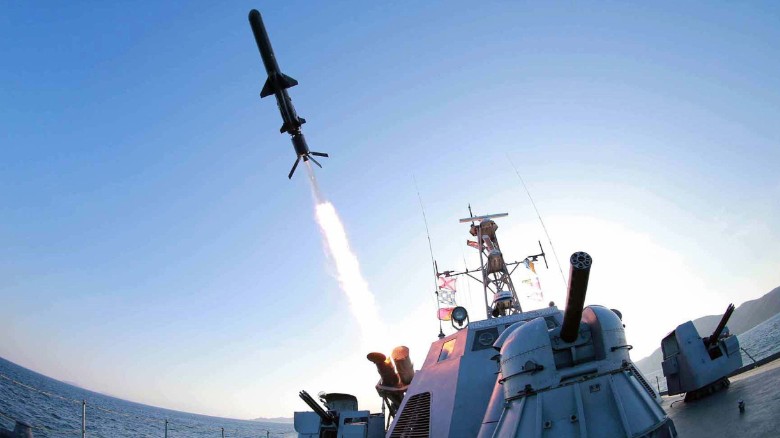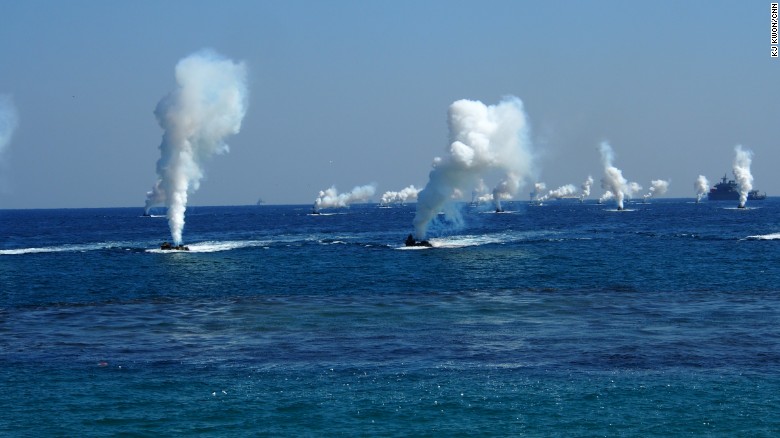North Korea’s attempted missile tests Thursday are just the latest in a string of muscle-flexing and trash-talking provocations out of Pyongyang.
U.N. officials gathered later Thursday to address North Korea’s behavior, which Pentagon officials say has led to levels of tension in Asia unprecedented in modern memory
Since North Korean leader Kim Jong Un assumed power in 2011, he has shown a penchant for brute force. He’s secured his hold on power by having about 70 senior officials killed — including one of his uncles. And he’s steadily raised regional tensions with rocket launches, missile firings, cyber attacks, nuclear tests and — North Korea claims — a hydrogen bomb test, an assertion U.S. officials dispute.

The threat to close U.S. allies Japan and South Korea, and the regional economic zone that the U.S. is closely tied to, is acute, with Seoul just 35 miles from the demilitarized border zone with North Korea. The threat is direct as well: 28,000 U.S. troops are stationed in South Korea with their families, and hundreds of thousands of other Americans work there. Currently, the U.S. and South Korea are conducting the largest-ever war game exercises in the region.

All this makes North Korea one of five evolving strategic threats that drive Pentagon budgeting and planning to keep any situation from spiraling out of control. And in case things do escalate, they have plans in place that mean, as the commander of U.S. Forces Korea General Curtis Scaparrotti put in February, the U.S. is “ready to fight tonight.”
Here’s how military officials and intelligence analysts say the U.S. works to keep the lid on the North Korean threat and — if need be — respond.
Operational plans
U.S. military planners have mapped out responses should the North Korean regime invade the South and in case the economically isolated state collapses. Last year, the U.S. and South Korea adopted a plan to deal with an outbreak of war that includes surgical strikes against North Korean nuclear facilities, missiles, and command and control centers — including “decapitation” operations to target senior leaders — according to The Washington Post and South Korean media. North Korea has argued these military exercises have driven them to develop nuclear weapons in self-defense.
China
Military planners are counting on engaging with China to ensure its leaders don’t misread U.S. actions as a power play for the peninsula should provocations escalate to conflict. Beijing is North Korea’s biggest backer, providing it with food, fuel and banking connections to the outside world. It’s also wary that instability in North Korea would mean thousands of refugees spilling over its borders and, in the event of an intervention, the U.S. on its doorstep.
In a demonstration of the Chinese concern about such a scenario, President Xi Jinping said that his country “will absolutely not permit war or chaos on the peninsula” and that “once it happens, it will not benefit anyone.”
Missile defense
These radar- and ground-based interceptors in California and Alaska are used to “engage the threat throughout its flight,” said Adm. Bill Gortney, commander of U.S. Northern Command, said in early March. In other words, to “keep them on the ground, kill them on the rails, kill them in boost phase and then get more warheads in space in midcourse.”
But North Korea’s recent work on mobile launchers, including its missile launch from a submarine Saturday, are challenging the U.S. defense system. Mobile launchers can be moved and hidden, making them harder to spot. Missile interceptors can’t easily get into position to shoot a missile if its point of origin and trajectory aren’t clear and it comes in with little warning.
The new technology means “the North Koreans are really complicating the hell out of U.S. defense planning,” said Patrick Cronin, senior director of Asia-Pacific Security at the Center for a New American Security. Military leaders want more funding to add to the 44 missile interceptors they’ll have in Alaska by the end of 2017.
Bomber flights
the U.S. has used its advanced aircraft to send a message after North Korea’s January nuclear tests. The Pentagon sent F-22 stealth aircraft from Japan to South Korea in a show of deterrence. B-52 bombers from Guam flew over the Korean Peninsula and are now stationed at a U.S. naval base in the Indian Ocean, giving them faster access to North Korea. It’s a reminder to Pyongyang, Cronin said, that “we have precision-guided, calibrated nuclear weapons that we can put right down on top of your head if you even think about doing something crazy.”
Intel
The U.S. and South Korea are investing in new tactical equipment to ensure that, among other things, they know where enemy and friendly forces are operating. Surveillance and reconnaissance aircraft that can function in all weather conditions are also a top priority to maintain situational awareness and keep an eye on targets.
Scaparrotti told House lawmakers that the surveillance gives him up to 12 hours’ warning of North Korean provocations, which helps him “set my posture to first defend South Korea and the large American citizen population that we have there.”
Cyber
North Korea has been sharpening its cyberwarfare abilities, said U.S. officials who point to the Sony Pictures Entertainment hack in 2013. That moved the U.S. and South Korea to establish a joint cybersecurity center, with analysts like Cronin predicting more to come.
The U.S. vowed to respond after the Sony attack, and though it never claimed responsibility for any particular actions, Cronin noted that shortly afterwards, North Korea suffered an Internet outage for 10 hours and connectivity problems for days.
Last but not least, strength in numbers.
Alliance-building
North Korean provocations have had a way of strengthening U.S. alliances with Japan and South Korea, said Victor Cha, a senior advisor at the Center for Strategic and International Studies. The administration stood up the first-ever U.S.-South Korean combined military division in 2015, added U.S. force rotations to the Korean peninsula and is completing its largest overseas base in a $10.7 billion plan to relocate U.S. forces within South Korea.
After recent North Korean activity, the U.S. powwowed with Seoul and Tokyo and encouraged South Korea to upgrade its equipment with purchases of F-35 Joint Strike Fighters, Global Hawks, Patriot missile upgrades and Apache helicopters. They are also discussing installing the high-altitude THAAD missile defense system.
In response to the 300,000 South Korean troops currently conducting exercises with 15,000 U.S. troops, North Korea’s foreign minister told the Associated Press that his country would stop its nuclear tests if the U.S. suspended the drills, an offer Obama quickly dismissed.
Diplomacy and sanctions
Secretary of State John Kerry said on April 11 in Japan that the U.S. and allies historically involved in talks with North Korea “are absolutely determined to keep the pressure on, but to do so in a way that hopefully brings people back to the table rather than spills over in a way that gets more dangerous rather than less.” Restarting talks, he added, “all depends on the North making the decision that they will negotiate denuclearization.”
U.S. and United Nations sanctions have done little to change North Korea’s course to date. One issue is how tightly they’re enforced. Despite tough new international sanctions against North Korea’s nuclear program that China uncharacteristically backed, Beijing’s trade with Pyongyang rose in the first quarter of this year.
“There will be heightened sanctions and more pressure on China to cut off all the energy on North Korea,” Cha said, but he added, “In fact, there are not many options.”
As reported by CNN
